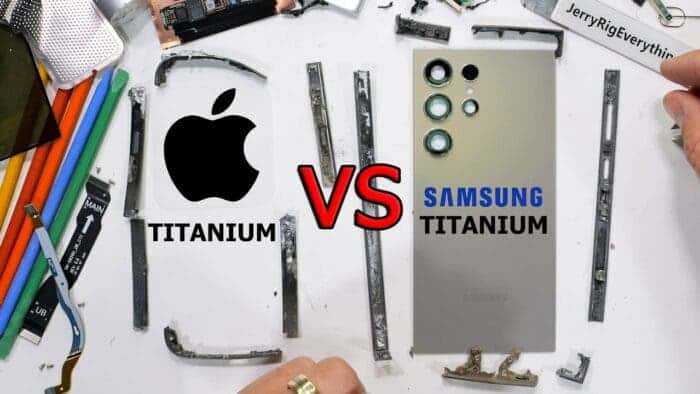Apple made it to the headlines after the release of the iPhone 15 series last year. One of the clear distinctions for newer Pro and Pro Max phones in the series is the build. Apple has utilized titanium to make the devices more durable. This year, Samsung did the same for its premium Galaxy S24 Ultra.
It comes with a titanium frame and exterior, which, again, enhances the durability of the Galaxy S24 Ultra. The predecessor came with an aluminum build, which is less resilient than titanium. Besides being durable and strong, titanium is also lightweight. Not to mention that titanium is more expensive than aluminum too.
But the thing is, not all titanium is the same. There are different grades for commercial products: 1, 2, 3, 4, and 5. Each grade is more durable and stronger than its predecessor. Apple officially disclosed that the iPhone 15 Pro and Pro Max are made of grade 5. Samsung, on the other hand, didn’t disclose the grade for its newly released Galaxy S24 Ultra. But we finally have the answer.
Disassembly of Samsung Galaxy S24 Ultra Sheds Light on the Build
The Galaxy S24 Ultra has gone through complete disassembly (video attached below). As the teardown revealed, Samsung has utilized grade 2 titanium for the frame of the smartphone. In other words, the iPhone 15 Pro is more durable than Samsung’s current premium flagship phone.
The Galaxy S24 Ultra Does Not Bring Many Advancements over Galaxy S23 Ultra Durability
The Samsung Galaxy S24 Ultra hasn’t gained much when compared to the durability of the S23 Ultra. Grade 2 titanium is more durable than 6061 aluminum, but not by a lot. To compare, the iPhone 15 Pro models are significantly more durable than the iPhone 14 Pro devices. Apple used stainless steel for its predecessors; grade 5 titanium is a big step up.
The teardown has also revealed another thing about the build. Samsung has used titanium only for the side rails. The Galaxy S24 Ultra still has 6061 aluminum for the other parts. What’s more interesting is that Samsung used plastic to fuse the titanium and aluminum parts. After all, it’s expensive to fuse aluminum and titanium.
As mentioned earlier, titanium is more expensive than aluminum. Also, lower grades of the materials are more affordable than higher grades. So, Samsung has chosen such a build to keep the manufacturing cost low. For those unaware, the Galaxy S24 Ultra starts at $1299.99. In comparison, the S23 Ultra, with a full aluminum build, launched with a starting price of $1199.99. But, yes, the phone S24 Ultra is still very durable. You can check out the durability test from the video attached below.
Other Things Revealed By The Teardown
This teardown wasn’t all about the titanium of the Galaxy S24 Ultra. The disassembly has also unveiled that Samsung has placed the haptic feedback motor in the bottom loudspeaker unit. This is an odd move as users would need to replace both the speaker and the motor if one of them fails.

But the good news is Samsung hasn’t backed down on the waterproofing of the Galaxy S24 Ultra. It even has protection for the S Pen slot. So, you can have complete peace of mind when using the phone in the rain.
What’s more important is that the phone is much easier to repair than its predecessor. Samsung has used simple Philips screws for the Galaxy S24 Ultra, making it easier to disassemble. Also, while most flagships stick the battery with a lot of glue, Samsung still uses pull tabs to make removal easy.





